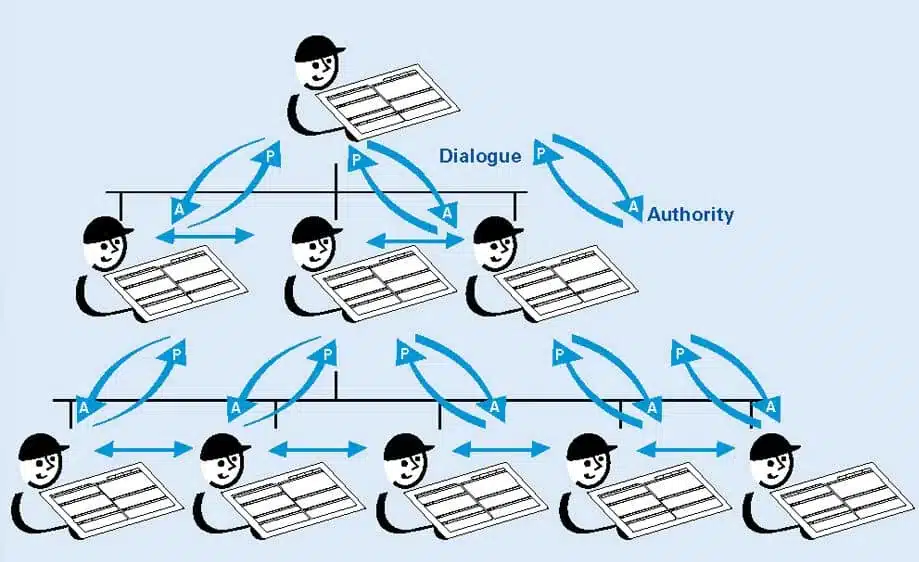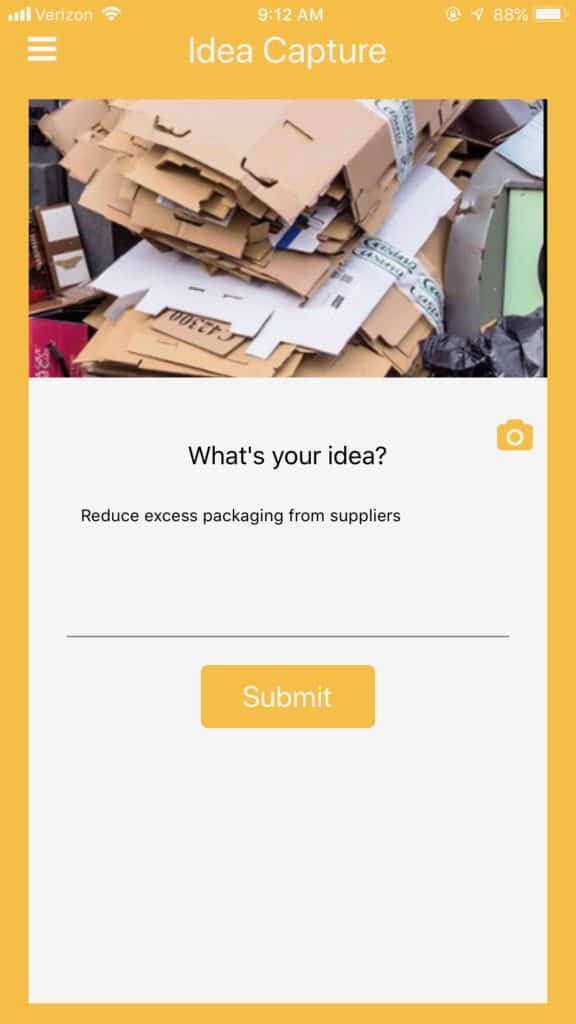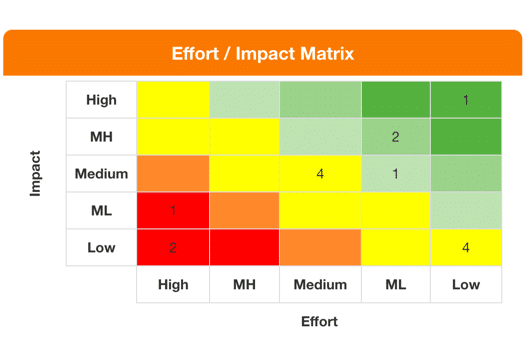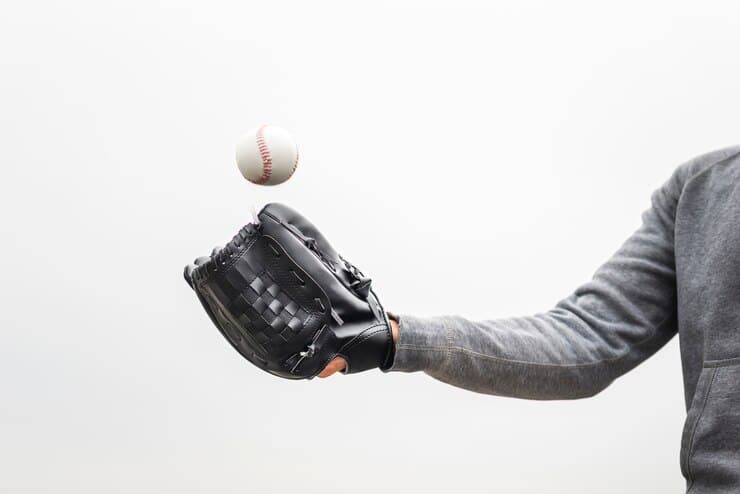Ever played catch as a kid? In the world of Lean management, that simple back-and-forth toss becomes a powerful tool. Catchball is a collaborative technique where ideas are thrown between colleagues, fostering communication, refining plans, and ultimately achieving better results. This article dives into how Catchball embodies core Lean principles to drive continuous improvement and engagement within your organization.
What is Catchball in Lean terms?
Catchball is a collaborative communication technique where ideas are exchanged back and forth between colleagues, similar to playing catch. It’s a core tool for driving continuous improvement and achieving success in Lean initiatives.
In terms of continuous improvement, catchball refers to an iterative process where an idea (the “ball”) is thrown between team members. Each person refines the idea through discussion before throwing it back. This ensures everyone has a voice and the plan is constantly improved.
Catchball is used in various Lean contexts, from strategy planning (Hoshin Kanri) to work process improvements. It’s a versatile tool for getting buy-in and refining plans before implementation.
The Rules of Lean Catchball
Lean Catchball, while not a rigid rulebook, adheres to some core principles to ensure smooth and effective communication:
Participation:
- Everyone Gets a Turn: The “ball” (idea) should be tossed around so that everyone involved has a chance to contribute. This fosters a sense of ownership and ensures all perspectives are considered.
- Clear Ownership: While ideas are discussed openly, there should be a clear understanding of who‘s responsible for the “ball” at any given time. This ensures accountability and keeps the process moving forward.
Communication & Understanding:
- Active Listening: Participants actively listen to each other, understanding the ideas and concerns presented before throwing the “ball” back.
- Open Dialogue: The environment should be open and encouraging questions, clarifications, and alternative viewpoints. Supportive discussion leads to better-developed plans.
- Clarity & Concision: Ideas and plans should be presented clearly and concisely, ensuring everyone has a good grasp of the topic at hand.
Focus & Improvement:
- Aligned Goal: Catchball discussions should stay focused on the original objective. While new ideas might emerge, ensure they contribute to achieving the initial goal.
- Continuous Improvement: The core of Lean, Catchball thrives on iterative refinement. Each “throw” should aim to improve the plan based on the team’s insights.
- Data & Evidence: Whenever possible, support ideas with data or evidence to strengthen the discussion and ensure the final plan is grounded in reality.
Remember: These are guiding principles, not hard and fast rules. Organizations can adapt Catchball to their specific needs, as long as it promotes open communication, continuous improvement, and shared ownership for achieving Lean goals.

Playing Lean Catchball: Step-by-step
Catchball, a key communication tool in Lean, is all about iterative improvement through open dialogue. Here’s how to play Catchball for Lean purposes in your organization:
Preparation:
-
Define the Goal: Clearly establish the objective you’re aiming to achieve through Catchball. Is it refining a process improvement plan, setting departmental goals, or cascading strategic objectives?
-
Assemble the Team: Identify the key players involved in achieving the goal. This could include team members, supervisors, and anyone impacted by the proposed changes.
-
Prepare the “Ball”: Formulate a clear and concise starting point for discussion. This could be a draft improvement plan, a proposed goal, or specific questions for the team.
Playing Catchball:
-
Initiate the Throw: The person leading the Catchball session presents the “ball” (the starting point) to the team. This could be a verbal explanation of the plan or a visual representation on a whiteboard.
-
Catch and Analyze: Team members actively listen and analyze the “ball.” Encourage questions, clarifications, and potential concerns.
-
Refine and Throw Back: Based on the discussion, the team collaborates to improve the “ball.” This could involve suggesting amendments to the plan, offering alternative solutions, or identifying potential roadblocks.
-
Iterate the Throw: The “ball” is then thrown back to the initiator, incorporating the team’s insights. The initiator analyzes the feedback and refines the plan further.
-
Continuous Catching: Repeat steps 2-4 until everyone feels comfortable and aligned with the refined plan. This iterative loop ensures all voices are heard and the plan is well-understood.
Additional gameplay guidance:
- Maintain Open Communication: Encourage an atmosphere where everyone feels comfortable sharing ideas and asking questions.
- Focus on Understanding: Ensure everyone grasps the purpose, goals, and potential implications of the plan.
- Document the Process: Capture key points, decisions, and action items from each Catchball session.
- Follow Through: After finalizing the plan, ensure clear communication and hold follow-up meetings to track progress.
By following these steps and fostering open communication, Catchball becomes a powerful tool for driving Lean success in your organization. It promotes collaboration, continuous improvement, and a shared sense of ownership for achieving your Lean goals.
The Benefits of Catchball as a Driver of Lean Success
Catchball, a collaborative communication technique in Lean methodology, plays a crucial role in achieving success. Here’s how it does it:
- Enhances Communication and Alignment: By throwing ideas back and forth, Catchball fosters open dialogue among colleagues. This clarifies understanding for everyone involved, helps identify potential roadblocks early on, and builds consensus. This shared ownership leads to a more unified approach towards achieving Lean goals.
- Drives Continuous Improvement: The iterative nature of Catchball allows for ongoing refinement. With each “throw,” teams can improve the plan, identify potential problems early, and find more effective solutions. This perfectly aligns with Lean’s core principle of continuous improvement.
- Empowers Employees: Catchball empowers employees by giving them a voice in shaping plans. Feeling valued and involved fosters a sense of ownership and motivates them to contribute their best efforts towards successful implementation.
- Reduces Waste: Catchball helps identify and eliminate potential waste early in the planning process. By openly discussing potential issues, teams can proactively address them, leading to smoother implementation and less rework.
- Strengthens Strategy Deployment: Catchball plays a vital role in Hoshin Kanri, a Lean strategy deployment method. Through Catchball discussions, strategic goals are cascaded down the organization, ensuring everyone understands their role and how their work contributes to the bigger picture.
Overall, Catchball acts as a powerful driver of Lean success by promoting clear communication, employee engagement, and continuous improvement. It fosters a collaborative environment where everyone feels involved, leading to more effective and efficient Lean implementations.
Playing Catchball with KPI Fire’s Idea Funnel
Using KPI Fire’s Idea Funnel is a great way to play catchball with ideas and turn them into actionable improvements!

Here’s how you can think of it as a game:
Throwing the Ball (Idea Capture):
- Everyone on the team throws ideas into the funnel – no matter how small or seemingly insignificant.
- Encourage participation by making it easy to submit ideas – use anonymous submissions or quick online forms.
- Learn how to create a form to collect ideas for goals in KPI Fire.
Catching the Ball (Idea Evaluation):
- Don’t let every idea fly through – use the funnel to filter and evaluate them.
- Consider criteria like potential impact, feasibility, and alignment with overall goals.
- Discuss and vote on ideas as a team – this fosters collaboration and ownership.

Playing Catch (Idea Development):
- Refine the most promising ideas – brainstorm solutions, identify resources, and estimate effort.
- Use the funnel stages to move ideas through this development phase.
Scoring a Run (Idea Implementation):
- Turn the best ideas into actionable projects.
- Assign ownership, set deadlines, and track progress within the funnel.
- Celebrate successes and learn from failures – this keeps the innovation momentum going.
- Easily capture ideas from anywhere using the KPI Fire mobile app, then turn great suggestions into DMAIC projects, KAIZEN events, or QUICK WINS. KPI Fire has built in workflows for common problem solving methods. Additionally, you can create your own.
*Learn to capture ideas and link them to strategic goals by watching the video below.
Benefits of Winning Lean Catchball
- Engaged Team: Everyone feels involved in the improvement process.
- Better Ideas: Multiple perspectives lead to more creative solutions.
- Prioritized Action: Focus on the ideas with the most significant impact.
- Continuous Improvement: The funnel becomes a central hub for ongoing innovation.
Ultimate Idea Exchange in Motion
Think of it like a real game of catch – the more you play, the better you get at generating and implementing great ideas! Be sure to request your free demo of KPI Fire and utilize the Idea Funnel feature to enjoy a proverbial winning game of Lean Catchball with your team members.




